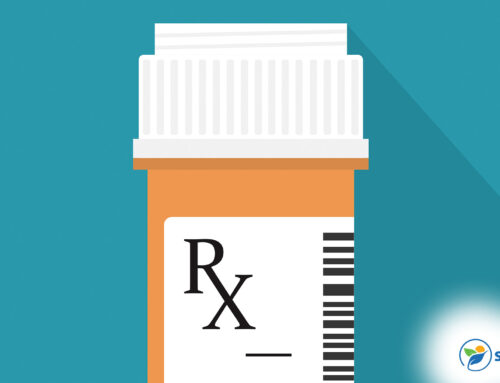If you’re recovering from opioid addiction, your health care team may prescribe Suboxone to control cravings and reduce dependence. This drug, the brand name for a combination of buprenorphine and naloxone, is taken as a film that dissolves under the tongue and comes in several strengths. Naloxone blocks the effects of heroin and other opiates while buprenorphine helps reduce withdrawal symptoms associated with stopping these drugs.
While the combination of these medications can effectively treat addiction to opioids, individuals often experience unpleasant side effects such as Suboxone headache and nausea. If you or a loved one is struggling with Suboxone because of fatigue, nausea, lack of motivation and generally feeling sick, this guide can help you understand and cope with these side effects of addiction treatment.
Understanding Suboxone Headache and Other Side Effects
Suboxone is a Schedule III controlled substance used for medication-assisted addiction treatment. Your health care provider may prescribe one of four different Suboxone strengths. When used as directed, this drug effectively supports recovery from opioid addiction and reduces substance abuse.
First, during the induction phase of treatment, Suboxone reduces withdrawal symptoms you may experience after discontinuing use of oxycodone, morphine, codeine or heroin. You’ll start taking the medication once your symptoms begin, usually within 2 to 3 days of quitting opioids.
After you get through withdrawal, you’ll enter the maintenance phase of medication-assisted treatment. During this stage, you’ll keep taking a steady dose of Suboxone to control cravings as you continue a program of addiction recovery. Your doctor will help you slowly taper off the medication after you’ve been in treatment for about a year.
It’s important to provide a full medical history before taking Suboxone. It can be dangerous to use this drug if you have a history of opioid overdose, chronic obstructive pulmonary disease, liver disease or seizures. People who are pregnant or breastfeeding should not take Suboxone.
Managing Suboxone Nausea
Most cases of nausea resulting from Suboxone resolve in a week or so as your body adjusts to the medication. You can try these techniques to manage this unpleasant symptom:
- Taking over-the-counter nausea medications
- Drinking cool water or another hydrating beverage such as Pedialyte
- Eating mild foods like bread, plain rice or crackers about 15 to 20 minutes before you take Suboxone
- Spitting out instead of swallowing residue that remains after the Suboxone strip dissolves
- Stepping outside for fresh air if possible, even just for a few minutes
- Distracting yourself with a book, TV show or podcast
- Consuming ginger or peppermint herbal tea
- Practice meditation or breathing exercises to help you relax
- Remain upright (standing or sitting) and avoid exercise after eating
Although it can be difficult to manage severe Suboxone side effects, it’s important to balance the discomfort with the need to recover from opiate addiction and move forward with a healthy lifestyle. If your body can’t handle the drug, your doctor may adjust your dosage or recommend a different type of medication.
Medication-assisted treatment works best when combined with other forms of addiction recovery. Ideally, your treatment program should also include talk therapy, support groups, cognitive behavioral therapy, relaxation techniques such as yoga and medication, and other complementary treatments that support physical and emotional healing.
Coping With Suboxone Side Effects
Along with nausea, the most common side effects of Suboxone include constipation, diarrhea and headache. You may also experience:
- drowsiness
- back pain
- trouble sleeping
- heart arrhythmia
- dizzy spells and fainting
- oral numbness or pain
- sweating
- chills
- fever
- pain while urinating
- depression
- nervousness
- anxiety
Suboxone produces a relaxed feeling that makes some people unmotivated. They may eventually become dependent on the drug. Talk to your health care provider if you’re concerned about this possible effect of Suboxone treatment.
In rare cases, Suboxone can cause liver damage. You may have to undergo blood tests during your treatment regimen to make sure your liver keeps working properly. Signs of liver damage include yellow-tinged eyes and skin, fatigue and stomach pain.
You should not abruptly discontinue use of Suboxone even if you experience uncomfortable side effects. Doing so will result in physical withdrawal symptoms, including aching muscles, sweating, nausea, runny nose, watering eyes and restlessness. Attempting to snort or inject Suboxone will also cause severe withdrawal symptoms. If you want to stop taking the medication, do so only under a doctor’s care. Your health care provider can help you gradually come off Suboxone.
Detecting Suboxone Emergencies
If a loved one or family member takes Suboxone, it’s important to be aware of the drug’s overdose symptoms. Go to the emergency room or call 911 if the person displays unusual fatigue or weakness, pinpoint pupils, blue-tinged skin or fingernails, shallow, fast, slow or irregular breathing, confusion or blurred vision.
Some people also have allergic reactions to Suboxone. Call 9-1-1 or go to the emergency room if your loved one experiences swelling of the throat, tongue or lips, hives or rash on the skin or difficulty breathing after taking the medication.
Combining Suboxone with other substances can be life-threatening. The drug should never be taken with other street drugs, alcohol, opioids or benzodiazepines, which is a class of antianxiety drugs that includes Xanax, Valium and Ativan.
Other Types of Medication-Assisted Treatment
Methadone is an alternative to Suboxone, but it carries a higher risk of abuse and dependence. If your health care provider prescribes methadone, you must take it at a designated methadone clinic or at your doctor’s office. Unlike Suboxone, it is not approved for home use.
Getting Help With Suboxone Treatment
Medication-assisted treatment for opioid addiction can take the form of many different medications. If you struggle with the side effects of Suboxone, entering an inpatient treatment program can help you find the formulation that works best for your recovery. Reach out to Sunlight Recovery today and talk to one of our professional counselors about the benefits of residential care for opiate dependence.






